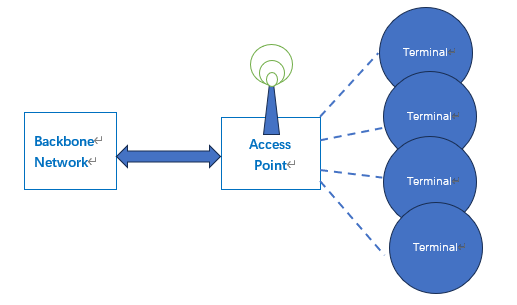Fixed Wireless Access (FWA) is an important 5G technology, providing new and more flexible wireless solutions for broadband for the last mile to the home.

Fixed wireless is the operation of wireless communication devices or systems used to connect two fixed locations (e.g., building to building or tower to building) with a radio or other wireless link, such as laser bridge. Usually, fixed wireless is part of a wireless LAN infrastructure. The purpose of a fixed wireless link is to enable data communications between the two sites or buildings. Fixed wireless data (FWD) links are often a cost-effective alternative to leasing fiber or installing cables between the buildings.
The point-to-point signal transmissions occur through the air over a terrestrial microwave platform rather than through copper or optical fiber; therefore, fixed wireless does not require satellite feeds or local telephone service. The advantages of fixed wireless include the ability to connect with users in remote areas without the need for laying new cables and the capacity for broad bandwidth that is not impeded by fiber or cable capacities. Fixed wireless devices usually derive their electrical power from the public utility mains, unlike mobile wireless or portable wireless devices which tend to be battery powered.
Antennas
Fixed wireless services typically use a directional radio antenna on each end of the signal (e.g., on each building). These antennas are generally larger than those seen in Wi-Fi setups and are designed for outdoor use. Several types of radio antennas are available that accommodate various weather conditions, signal distances and bandwidths. They are usually selected to make the beam as narrow as possible and thus focus transmit power to their destination, increasing reliability and reducing the chance of eavesdropping or data injection. The links are usually arranged as a point-to-point setup to permit the use of these antennas. This also permits the link to have better speed and or better reach for the same amount of power.
These antennas are typically designed to be used in the unlicensed ISM band radio frequency bands (900 MHz, 1.8 GHz, 2.4 GHz and 5 GHz), however, in most commercial installations, licensed frequencies may be used to ensure quality of service (QoS) or to provide higher connection speeds.
Fixed wireless broadband
With the growing infrastructure of wireless networks, and improving speed and reliability, fixed wireless has also become a viable solution for broadband access. Businesses and homes can use fixed-wireless antenna technology to access broadband Internet and Layer 2 networks using fixed wireless broadband. Networks which have redundancy and saturation and antennas that can aggregate signal from multiple carriers are able to offer fail-over and redundancy for connectivity not generally afforded by wired connections. In rural areas where wired infrastructure is not yet available, fixed-wireless broadband can be a viable option for Internet access.
System composition: A typical fixed wireless access system consists of the following units.
(1) User Unit: receives the wireless signal from the base station, recovers it into an analog audio signal after demodulation and decoding processing, and then sends it to the user terminal (telephone, fax machine, data modem, etc.), which is carried by the user or fixed at a certain location.
The wireless transceivers are divided into three types: fixed, mobile and portable. They provide users with standard interfaces for telephone, fax, data modem and other terminals, and can also be integrated with the terminal. It is connected to the base station through a wireless interface and transparently transmits the services and functions provided by the switch to end users. It can be divided into single-user units and multi-user units.
(2) Base station: A base station is a wireless transceiver device controlled by a controller and serving a community. It provides a wireless channel with user units through a wireless interface; a wireless base station is usually a multi-channel wireless transceiver located in a central location, which transmits the Range called a “cell” (omnidirectional antenna) or a “sector” (directional antenna), and the coverage range varies from a few hundred meters to tens of kilometers.
(3) Base station controller: Also known as central office or wireless port controller, its function is to provide interfaces with base stations, networks, operation and maintenance centers, monitoring wireless channel control and base station etc., and completing the transfer with switches. It determines circuit allocation to individual users and monitors system performance.
The base station and the controller can be selected to form star-shaped, tree-shaped, ring-shaped and other transmission networks based on user distribution, geographical environment, loop reliability and other factors, using twisted pair, optical fiber or digital microwave transmission systems.
(4) Network management center: manages the entire fixed wireless access system. Its functions include configuration management, fault management, performance management, security management and billing management.
Compared with mobile communication wireless access systems, fixed wireless access has unparalleled advantages in terms of installation and maintenance costs, service speed, and access network flexibility and coverage.
However, there are still many difficulties in actual development, such as insufficient technological development, inconsistent frequency band allocation, high cost of fixed base station equipment, and insufficient user recognition.



